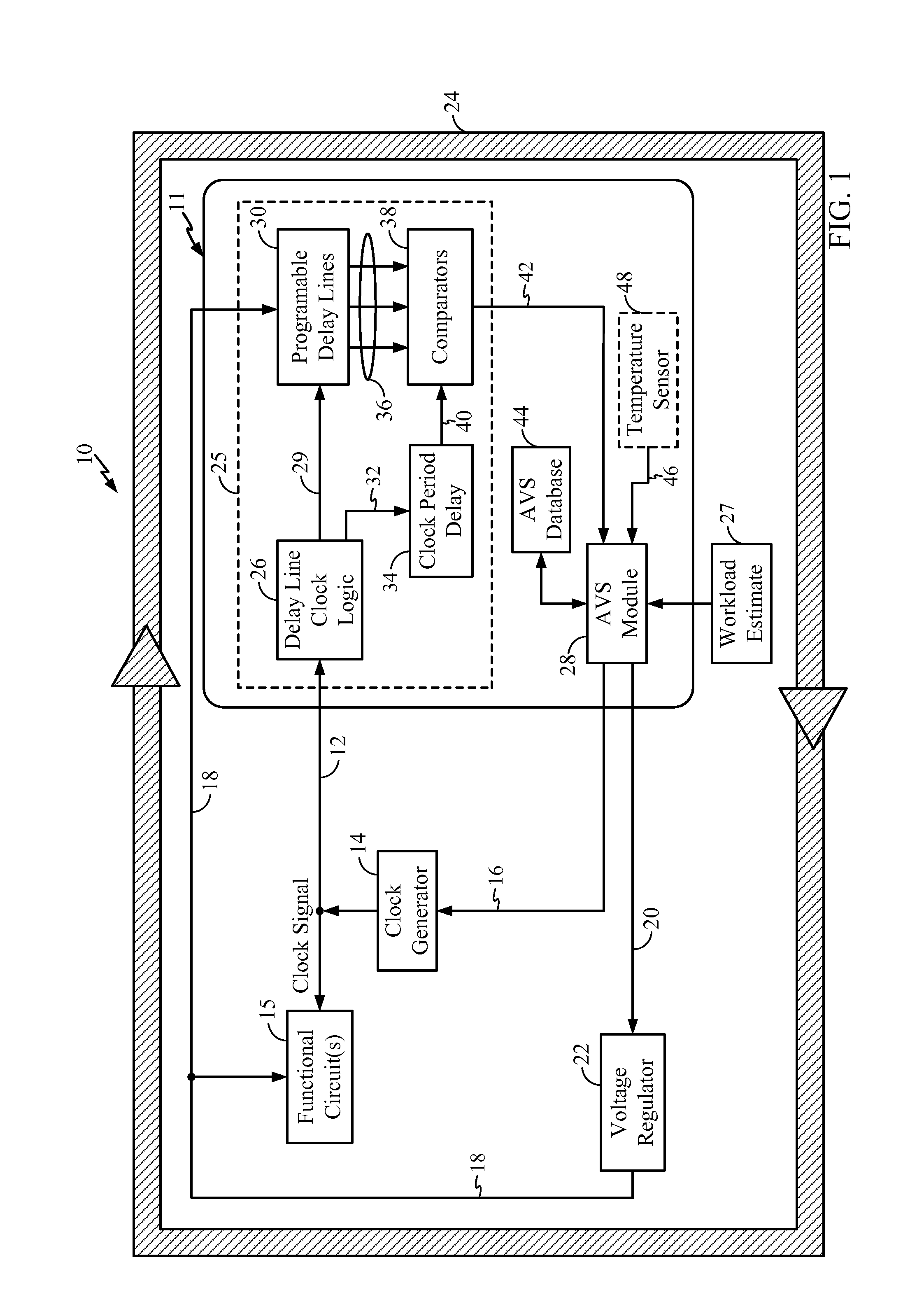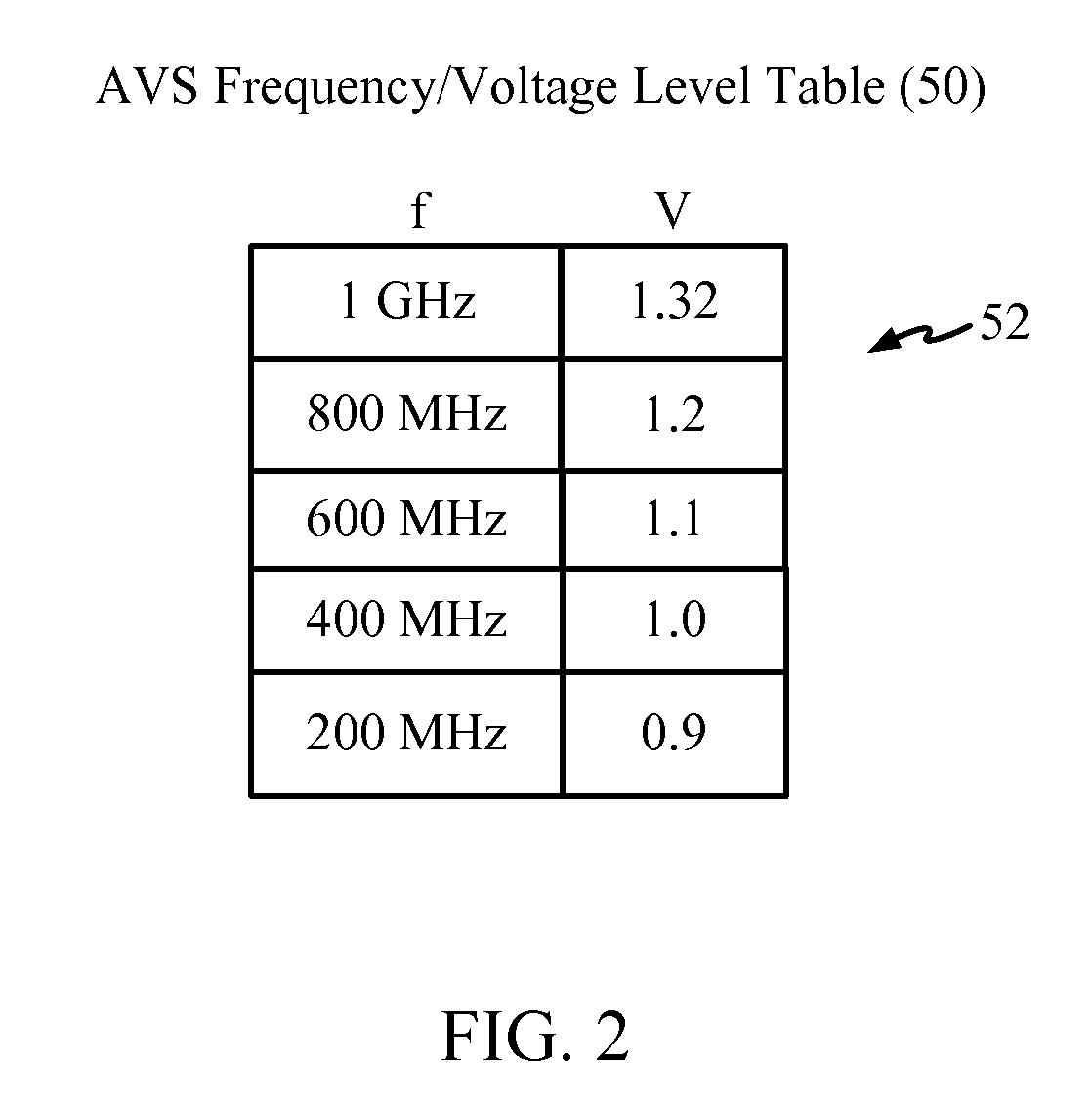Adaptive voltage scalers (AVS), systems, and related methods
a voltage scaler and voltage level technology, applied in the field of adaptive voltage scalers, can solve the problems of delay variations, increase power consumption, and decrease in voltage level the maximum operating frequency of the circuit, so as to avoid or reduce tolerance voltage margins, and populated more quickly
- Summary
- Abstract
- Description
- Claims
- Application Information
AI Technical Summary
Benefits of technology
Problems solved by technology
Method used
Image
Examples
Embodiment Construction
[0040]With reference now to the drawing figures, several exemplary embodiments of the present disclosure are described. The word “exemplary” is used herein to mean “serving as an example, instance, or illustration.” Any embodiment described herein as “exemplary” is not necessarily to be construed as preferred or advantageous over other embodiments.
[0041]Embodiments disclosed in the detailed description include adaptive voltage scalers (AVSs), AVS systems, and related circuits and methods. The AVSs and AVS systems, circuits, and methods are configured to adaptively adjust the voltage level powering a functional circuit(s) based on a target or desired operating frequency and delay variation conditions for a functional circuit(s) to avoid or reduce voltage margin. Avoiding or reducing voltage margin can conserve power while maintaining proper functional circuit(s) operation. Delay variations can include one or more manufacturing variations specific to each AVS and functional circuit(s)...
PUM
 Login to View More
Login to View More Abstract
Description
Claims
Application Information
 Login to View More
Login to View More - R&D
- Intellectual Property
- Life Sciences
- Materials
- Tech Scout
- Unparalleled Data Quality
- Higher Quality Content
- 60% Fewer Hallucinations
Browse by: Latest US Patents, China's latest patents, Technical Efficacy Thesaurus, Application Domain, Technology Topic, Popular Technical Reports.
© 2025 PatSnap. All rights reserved.Legal|Privacy policy|Modern Slavery Act Transparency Statement|Sitemap|About US| Contact US: help@patsnap.com



